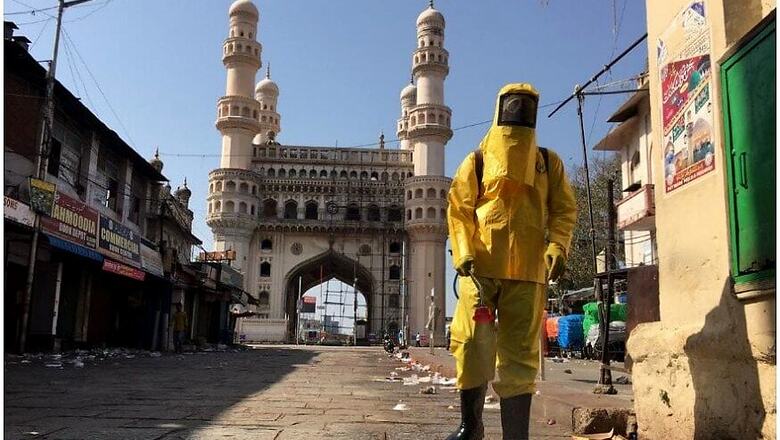
views
New Delhi: The one-day Janata Curfew observed in the country on March 22 resulted in the lowest average level of nitrogen dioxide (NO2) pollution ever recorded in the spring season across urban areas since 2017. Since then, it has remained steadily low upto April 7 as the national lockdown continued in order contain the spread of the deadly coronavirus.
The pollution hotspots in major cities, as well as pollution in major industrial and coal power plant towns also showed a sharp dip, an analysis by Centre for Research on Energy and Clean Air (CREA) showed.
A drastic reduction in vehicular activity, industrial activity and consumption of electricity were the chief causes of the improvement in the NO2 levels during the lockdown phase, data analyzed by CREA up to April 7 showed.
"The analysis showed us drastic and clear reductions in pollution levels, which are a resultant of decreasing fossil fuel consumption in transportation, industries and energy sector," CREA said.
The research body used ambient air quality data from about 200 monitoring stations of Central Pollution Control Board (CPCB) and images from the European Space Agency satellite Sentinel 5P-TROPOMI to analyse the impact of the national lockdown on air quality.
NO2 is a key contributor to PM 2.5 formation as it plays a significant role in secondary particulate formation, CREA added. Data sourced by CREA from the Ministry of Petroleum showed that as against March 2019, there was a 24% reduction in the consumption of vehicular fuel such as diesel and petrol and other petroleum productions used in the transportation sector within cities in March 2020. The overall consumption of petroleum products in India decreased by 18% during the same period.
The drop in power demand, subsequent shutting down of thermal power plants temporarily and associated drop in coal consumption have all contributed to better NO2 levels, CREA said. For instance, barring two units at Dadri Power Plant in Uttar Pradesh, all coal-fired power plants within 300 km radius of Delhi, situated in Haryana, Punjab and UP were shut down due to low demand.
In central and eastern India, coal-fired electricity generation in Madhya Pradesh, Odisha, Jharkhand, Bihar and West Bengal also showed a dip. CREA’s analysis showed that there was a 19 per cent overall reduction in power generation in India in two weeks after March 24, compared to two weeks prior to the lockdown period.
“The Covid-19 crisis is a big setback to mankind, but it has shown us clearly that we can clean our air if we work on sources of pollution and if we enforce our national emission standards for industries and power plants strictly,” said Sunil Dahiya, analyst at CREA.


















Comments
0 comment